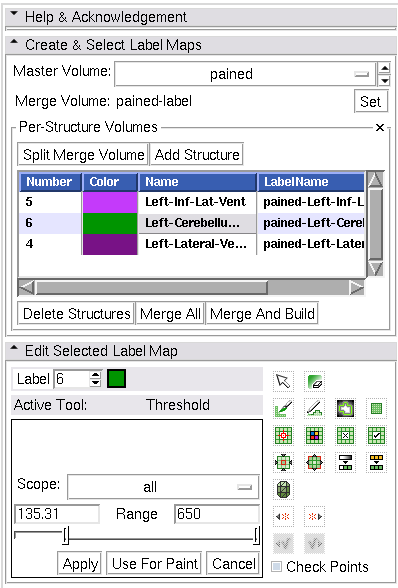2011 Winter Project Week:Breakout Multi-Image Engineering
Back to Project Week Agenda
Agenda breakout session: Multi-Image Engineering in slicer
Wednesday 8-10am
Session Leaders: Jim Miller, Steve Pieper, Alex Yarmakovich, Junichi Tokuda, Demian Wasserman
Contents
Background
Increasingly, we have data in in individual subjects in slicer which are multi something. Examples are:
- multi-channel (T1, T2, flair, dual echo, etc.)
- DWI
- rgb and other multi-channel images
- time series, including DCE, cardiac cycle, follow-up studies in cancer, multiple intra-procedural volumes (with potential translation, rotation, deformation)
- multiple subjects for atlas formation / population studies ?
- results from processing using different parameters ?
Current State
We have parts of the ability to handle such multi-dimensional volume in the DWI and 4D infrastructures:
I/O
- Dicom to nrrd
- TimeSeriesBundleNode is a mrml node to organize 4D time series data.
Display
- In the volumes module, a slider allows to look at any of the individual volumes in DWI data set.
- In the 4D display module, a movie player like capability exists
- The dti infrastructure allows the display of derived scalar values such as FA and color by orientation
- Add an interface to break a multivolume into its elements and to assemble the elements into a multivolume. Equivalent, but more constrained capabilies have been recently added to the editor module.
Existing Processing capabilities
Multi volumes are processed in Slicer in specialized ways.
- Parametric analysis:
- DTI estimation from DWI
- Tofts parameter estimation from DCE
- Segmentation:
- EM segmentation from multi-channel morphology data
- Registration
- Brainsfit has in principle the ability to register multi data sets to each other and Gtract has a first solution which is engineered for DWI
The Need
All of the current examples are special cases. If we can generalize those into a single architecture for multi data, there would be a lot of potential for cross-benefits. We need a common engineering and UI philosophy for everybody who is working on these topics. Not just images but many (all?) MRML node types should support temporal or other sequences, such as: transform, model, fiducial
I/O
- We should have a single module to organize the data. DICOM to nrrd is a good start, but we need to be able to handle separate T1 and T2 acquisitions as well. We also need to be able to handle non-dicom data. Perhaps something like: load all data into slicer and associate them inside slicer in a special module. Write out as a single nrrd file.
- Non-image nodes?
- May point to data on disk without immediately loading it, e.g., description of sequences/sets of images to be processed
- Support sharing: should be able to maintain the grouping of data for distribution to others (packaging, not just IO)
- Unit = collection of MRML files? (e.g., an xcat file is a standard format to describe results of a database search - supported by XNAT and MIDAS)
Display
- We should create a single visualization infrastructure to handle multi data: compare viewers, rgb channels, time series movies: equivalent slice viewers and 3D viewers
- Compareview should allow to show multi data in compareviewers. When we have a few volumes, then we can display all. If its a large number of volumes, we will only be able to display a few. Some engineering work will be needed to make this easy on the user.
Processing
- Common api for processing: EM segmentation, pharmacokinetic models, DWI filtering, tensor estimation should all plug into the data in the same way.
- Registration: where does it fit? should we provide capability to include transformation assigned to each timepoint/channel? rigid/non-rigid? If yes, probably we should allow to access the original data, probably storing resampled data only is not a good option.
- Generalize eddy current correction for general purpose multi-data fusion? Same subject affine, multiple points. Add N4 bias correction?
